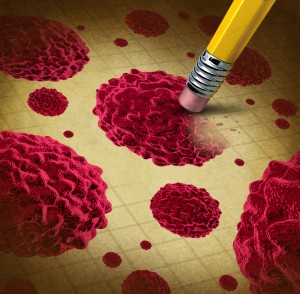
Alcohol, together with tobacco and obesity, is one of the most important modifiable causes of morbidity and premature mortality, and is estimated to account for around 4% of deaths worldwide. This study attempted to clarify the number of alcohol-attributable cancer deaths in the United States, and the years of potential life lost in this way.
This research was needed for a number of reasons:
- Previous estimates are now out of date, being based on research conducted ten years ago or more
- New evidence has emerged on a range of cancers not previously considered to be related to alcohol use
- New methods have been developed to better estimate levels of alcohol consumption at a population level

This research included oral cavity and pharynx, larynx, oesophagus, liver, colon, rectum and female breast cancers
One of the difficulties with research into alcohol use and cancer risk is that not all cancers are due to alcohol use, and not everyone who consumes alcohol will develop cancer. What is required is an estimate of the proportion of cancer deaths likely to be due to alcohol use, known as the Population-Attributable Fraction (PAF). This will be different for different cancers, since the strength of the association with alcohol use will differ across these. The authors focused on seven cancers (oral cavity and pharynx, larynx, oesophagus, liver, colon, rectum and female breast) considered to be causally related to alcohol use by both the International Agency for Research on Cancer, and the World Cancer Research Fund.
Methods
The authors collected data from various sources. United States mortality data were obtained for the 7 cancers studied from the Vital Statistics System, and the estimated Years of Potential Life Lost (YPLL) were calculated. In addition, the relative risks for alcohol use and the 7 cancers studied were obtained from meta-analyses published since 2000. Finally, data on per-capita alcohol consumption in the United States were obtained from sales-based data. There are advantages and disadvantages to both sales-based data and survey (i.e., self-report) data when assessing alcohol use. Sales-based data can’t tell differences in alcohol use by age, sex or demographics, while survey data typically under-report consumption levels. The authors used recently developed methodologies to combine both sales-based and survey data, to more accurately capture true patterns of use.
Results

30% of alcohol-related cancer deaths occurred in people who consumed 20 grams or less of alcohol per day
The findings were clear, and reasonably robust to different methods of calculating the PAF and YPLL for each of the 7 cancers considered:
- The authors concluded that overall around 3.5% of all cancer deaths in the United States in 2009 (about 19,500 people) could be attributed to alcohol use
- Each alcohol-related cancer death results in about 18 YPLL
- Perhaps most strikingly, about 30% of alcohol-related cancer deaths occurred in people who consumed 20 grams or less of alcohol per day
- In the UK, a Unit is 8 grams of alcohol, so this is equivalent to just 2.5 Units per day, or approximately 1 pint of strong beer
- This is below the government UK guidelines for alcohol consumption of 3-4 Units per day for men and 2-3 Units per day for women
Conclusions
This is a well-conducted study using state-of-the-art statistical methods to estimate the cancer burden that can be attributed to alcohol consumption. Although the results are based on United States data, there are no particular reasons to think that the results won’t generalise to other countries. If this is the case, it suggests that even relatively modest levels of alcohol consumption contribute to a substantial number of cancer-related deaths.
Link
Nelson DE, Jarman DW, Rehm J, Greenfield TK, Rey G, Kerr WC, Miller P, Shield KD, Ye Y, Naimi TS. Alcohol-Attributable Cancer Deaths and Years of Potential Life Lost in the United States (PDF). Am J Public Health 2013; 103(4): 641-648. doi: 10.2105/AJPH.2012.301199.


Alcohol consumption accounted for 19,500 cancer deaths in the US in 2009: Alcohol, together with tobacco and o… http://t.co/LGnOQ9L3LK
Pls RT @AlcoholConcern @AlcoResearchUK @alcoholpolicyuk Which cancers can be caused by drinking alcohol? http://t.co/Zyh81DnoRT
@Mental_Elf Blog on alcohol consumption in UK. #ukpubs http://t.co/2AIbl6Woz5
Read @MarcusMunafo ‘s blog on #alcohol and #cancer http://t.co/Zyh81DnoRT
TARG’s @MarcusMunafo has written for @Mental_Elf about alcohol and cancer http://t.co/R2WjhHSilE
New US research reports on alcohol-attributable cancer deaths http://t.co/Zyh81DnoRT
“@Mental_Elf: New US research reports on #alcohol-attributable cancer deaths http://t.co/1aM1JPaGTn” << need to change #PublicHealth msg?
30% of alcohol-related #cancer deaths occurred in people who consumed 20 grams or less of #alcohol per day http://t.co/Zyh81DnoRT
No one consumes alcohol by the gramme, do they, @Mental_Elf ?
New US research: Alcohol consumption accounted for 19,500 US cancer deaths in 2009 http://t.co/UYrVUQ7wTN via @Mental_Elf
Alcohol consumption accounted for 19,500 cancer deaths in the US in 2009 http://t.co/zUPJY0HqDu via @sharethis
New study: modest levels of alcohol consumption contribute to a substantial number of cancer-related deaths http://t.co/Zyh81DnoRT
@Mental_Elf this is not so good news…
@Mental_Elf surprising result since modest #alcohol consumption is supposed to have benefits.
19,500 #cancer deaths each year in USA can be attributed to alcohol. Necessary intervention target for #publichealth. http://t.co/URbVrvQMWa
Alcohol consumption accounted for 19,500 cancer deaths in the US in 2009 | What’s your take? | Read More – http://t.co/rKplwqIgBg
Pls RT @CR_UK 30% of alcohol-related #cancer deaths occur in ppl who drink <20g of #alcohol per day http://t.co/Zyh81DnoRT
30% of alcohol-related cancer deaths occurred in people who drank equiv of a pint or less/day (via @TheMentalElf_) http://t.co/GWjJpEguVz
RT @mental_elf: Which cancers can be caused by drinking alcohol? http://t.co/DGRladrJ3g
@Mental_Elf @hullodave What’s that in units please?
@RobHughesComedy @Mental_Elf Depends on the drink. 10mls of alcohol is 1 unit in the UK. Units is volume (mls) x %ABV, divided by 1000.
@RobHughesComedy @Mental_Elf And about 1.3mls of alcohol is equal to 1g.
@RobHughesComedy @Mental_Elf So for example 1 pint, 2 units of beer is about 19g of alcohol depending on %. Fun times!
@hullodave @Mental_Elf Thanks. After processing that I need a drink. Half a lager shandy I think.